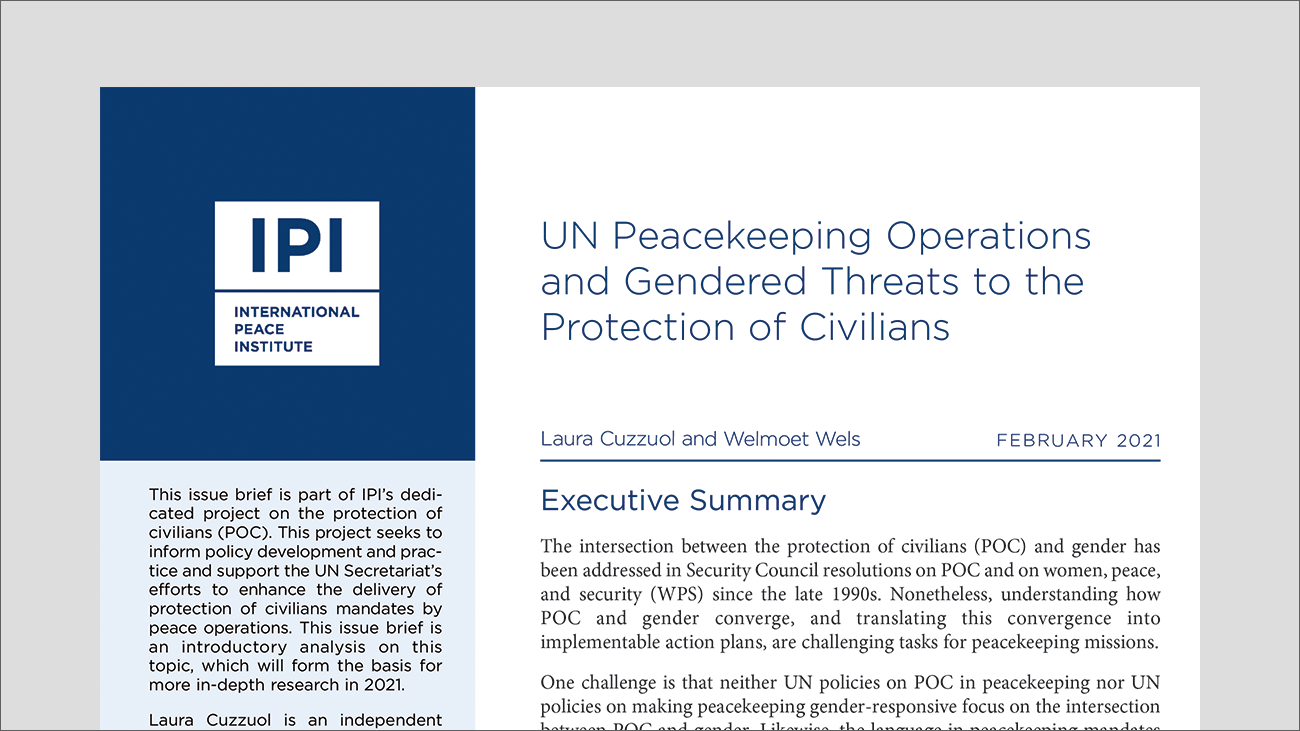
The intersection between the protection of civilians (POC) and gender has been addressed in Security Council resolutions on POC and on women, peace, and security (WPS) since the late 1990s. Nonetheless, understanding how POC and gender converge, and translating this convergence into implementable action plans, are challenging tasks for peacekeeping missions.
This paper examines how peacekeeping missions conceptualize and define gendered threats to civilians at the field level. It analyzes key policy documents that provide substantive guidance to peacekeeping missions on POC and gender and looks at the way the language in the mandates of peacekeeping missions provides a conceptual framework for understanding gendered POC threats. It also explores the way mission-level POC strategies frame the juncture of gender and POC, how missions identify and analyze gendered POC threats, and the coherence and sustainability of their approaches.
The paper concludes that UN peacekeeping missions could consider developing “safeguarding frameworks” on the intersection of POC and gender. These frameworks could provide more detailed guidance that challenges the conflation of “gender” and “women” and the association of gender-related protection primarily with sexual violence. They could also dictate that missions need to assess the gender aspects of every threat and could help move missions from coordinating to integrating their work on POC and gender.







